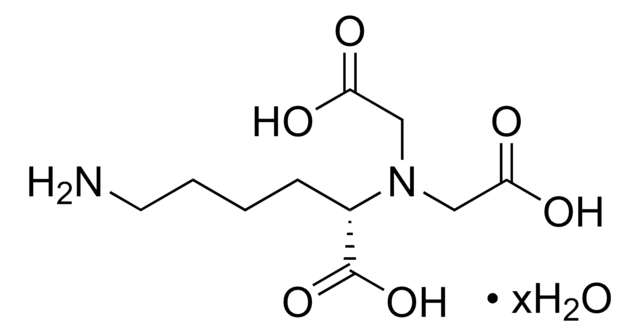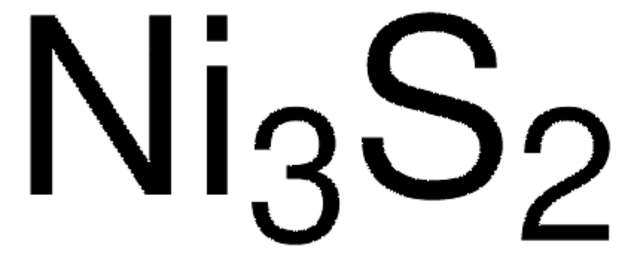656895
Nickel(II) sulfate
anhydrous, 99.99% trace metals basis
Synonyme(s) :
Nickel(2+) sulfate, Nickelous sulfate
About This Item
Produits recommandés
Qualité
anhydrous
Niveau de qualité
Essai
99.99% trace metals basis
Forme
solid
Impuretés
≤150.0 ppm Trace Metal Analysis
Application(s)
battery manufacturing
Chaîne SMILES
[Ni++].[O-]S([O-])(=O)=O
InChI
1S/Ni.H2O4S/c;1-5(2,3)4/h;(H2,1,2,3,4)/q+2;/p-2
Clé InChI
LGQLOGILCSXPEA-UHFFFAOYSA-L
Description générale
Properties of NiSO4:
- Highly soluble in water
- It can participate in redox reactions
- It can form complexes with various ligands
Application
- Nickel-based electrocatalysts for oxygen evolution.
- Ni-doped titanium dioxide nanoparticles for the photocatalytic degradation of organic pollutants such as methyl orange.
- Spherical silica particles coated with Ni, which find application in the field of ceramic industry and in catalysis.
À utiliser avec
Mention d'avertissement
Danger
Mentions de danger
Conseils de prudence
Classification des risques
Acute Tox. 4 Inhalation - Acute Tox. 4 Oral - Aquatic Chronic 1 - Carc. 1A Inhalation - Muta. 2 - Repr. 1B - Resp. Sens. 1 - Skin Irrit. 2 - Skin Sens. 1 - STOT RE 1 Inhalation
Organes cibles
respiratory tract irritation
Code de la classe de stockage
6.1C - Combustible acute toxic Cat.3 / toxic compounds or compounds which causing chronic effects
Classe de danger pour l'eau (WGK)
WGK 3
Point d'éclair (°F)
Not applicable
Point d'éclair (°C)
Not applicable
Équipement de protection individuelle
Eyeshields, Faceshields, Gloves, type P3 (EN 143) respirator cartridges
Faites votre choix parmi les versions les plus récentes :
Déjà en possession de ce produit ?
Retrouvez la documentation relative aux produits que vous avez récemment achetés dans la Bibliothèque de documents.
Les clients ont également consulté
Articles
In many technologies, performance requirements drive device dimensions below the scale of electron mean free paths (λe). This trend has increased scientific interest and technological importance of electrical resistivities at the nanoscale.
Lithium-Ion Battery Performance: Dependence on Material Synthesis and Post‑Treatment Methods
Plasmonic nanoparticles have unique optical properties that can be tailored to suit a variety of applications in the biotechnology1–8 and electronics9–16 industries.
Notre équipe de scientifiques dispose d'une expérience dans tous les secteurs de la recherche, notamment en sciences de la vie, science des matériaux, synthèse chimique, chromatographie, analyse et dans de nombreux autres domaines..
Contacter notre Service technique













